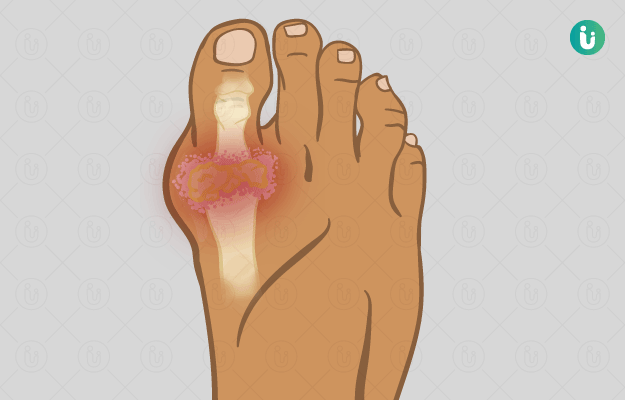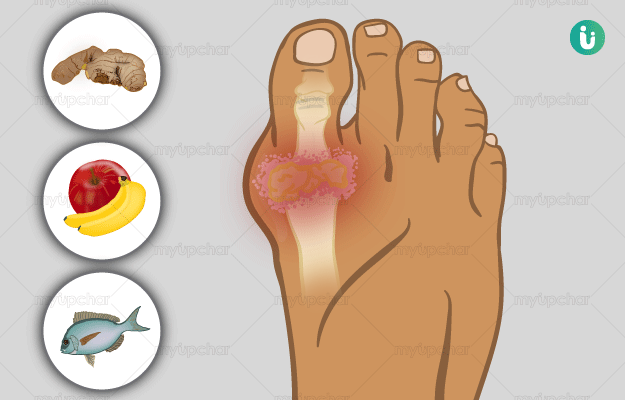What is Gout?
People with high levels of uric acid in the blood develop inflammatory arthritis known as gout. It is characterised by repeated attacks of severe joint pain, swelling, and redness, which are sudden and can develop overnight. Needle-like crystals are formed in the joints due to the uric acid deposits, which leads to sudden pain.
What are its associated signs and symptoms?
It most commonly affects the joint of the big toe of the foot. Some of the common signs and symptoms associated with gout include:
- Severe and sudden pain in the joints (especially knee, toes, elbow, and finger) along with stiffness
- Swollen and red, hot skin over the affected area
- Fever and chills
What are its main causes?
Gout is mainly caused by:
- Accumulation of uric acid in your bloodstream and formation of urate crystals in joint
- Combination of genetic and environmental factors
- Diet rich in certain purine foods
- Obesity
- Excessive alcohol intake
- Pseudogout (or acute calcium pyrophosphate arthritis)
How is it diagnosed and treated?
A detailed history of the symptoms will be taken, and a physical examination will be conducted by the physician. Certain tests are also conducted to assist the diagnosis:
- Blood test to determine serum uric acid levels
- X-ray
- Ultrasound scan to identify early crystal formation in the fluid between the joints
- Computed tomography (CT) or magnetic resonance imaging (MRI) to examine soft tissue and bone
Gout can be treated with
- Management of the pain due to flare
- Nonsteroidal anti-inflammatory drugs (NSAIDs) are used to treat flares, which includes ibuprofen, steroids, and the anti-inflammatory drug colchicine
- Prevention of future flares by
- Changing diet and lifestyle
- Shedding extra weight
- Avoiding alcohol consumption
- Avoiding purine-rich foods (red meat or organ meat)
- Changing or stopping medications associated with hyperuricemia (e.g., diuretics)
- Use of uric acid-lowering agents
- Allopurinol
- Febuxostat
- Pegloticase
- Self-management strategies
- Eat a healthy diet
- Perform adequate physical activity

 Doctors for Gout
Doctors for Gout  OTC Medicines for Gout
OTC Medicines for Gout
 Gout articles
Gout articles

 Ayurvedic Treatment of Gout
Ayurvedic Treatment of Gout
 Home Remedies for Gout
Home Remedies for Gout
 Homeopathic Treatment of Gout
Homeopathic Treatment of Gout







 Editorial Team
Editorial Team

 Dr. Laxmidutta Shukla
Dr. Laxmidutta Shukla


 Dr. Rajalakshmi VK (AIIMS)
Dr. Rajalakshmi VK (AIIMS)











